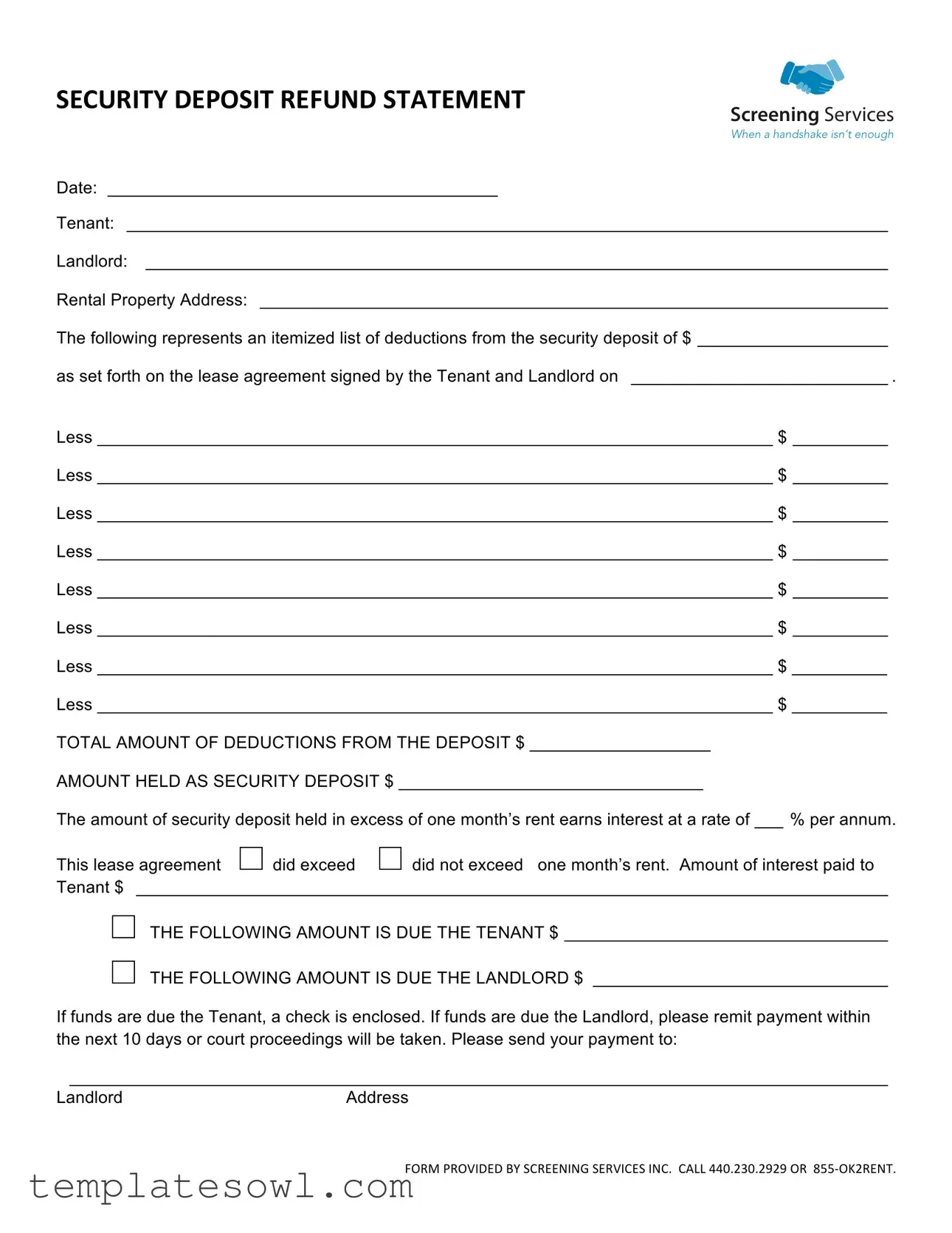SECURITY DEPOSIT REFUND STATEMENT
SCREENING SERVICES
When a handshake isn’t enough
Date: _________________________________________
Tenant: ________________________________________________________________________________
Landlord: ______________________________________________________________________________
Rental Property Address: __________________________________________________________________
The following represents an itemized list of deductions from the security deposit of $ ____________________
as set forth on the lease agreement signed by the Tenant and Landlord on ___________________________ .
Less _______________________________________________________________________ $ __________
Less _______________________________________________________________________ $ __________
Less _______________________________________________________________________ $ __________
Less _______________________________________________________________________ $ __________
Less _______________________________________________________________________ $ __________
Less _______________________________________________________________________ $ __________
Less _______________________________________________________________________ $ __________
Less _______________________________________________________________________ $ __________
TOTAL AMOUNT OF DEDUCTIONS FROM THE DEPOSIT $ ___________________
AMOUNT HELD AS SECURITY DEPOSIT $ ________________________________
The amount of security deposit held in excess of one month’s rent earns interest at a rate of ___ % per annum.
This lease agreement |
did exceed |
did not exceed one month’s rent. Amount of interest paid to |
Tenant $ _______________________________________________________________________________
THE FOLLOWING AMOUNT IS DUE THE TENANT $ __________________________________
THE FOLLOWING AMOUNT IS DUE THE LANDLORD $ _______________________________
If funds are due the Tenant, a check is enclosed. If funds are due the Landlord, please remit payment within the next 10 days or court proceedings will be taken. Please send your payment to:
______________________________________________________________________________________
Landlord |
Address |
|
FORM PROVIDED BY SCREENING SERVICES INC. CALL 440.230.2929 OR 855‐OK2RENT. |

